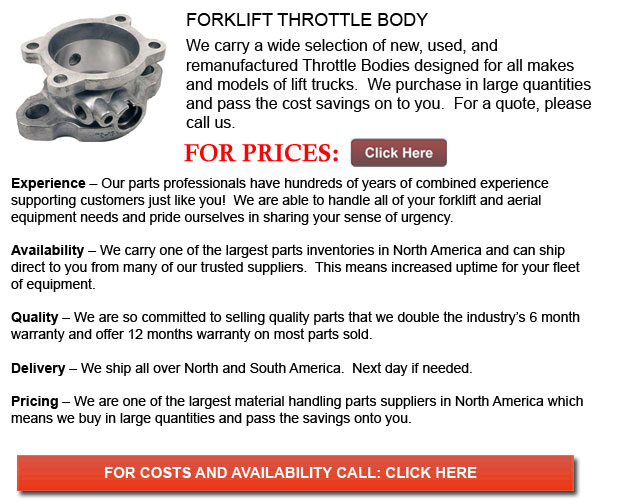
Forklift Throttle Body - Where fuel injected engines are concerned, the throttle body is the component of the air intake system which controls the amount of air which flows into the motor. This mechanism operates in response to operator accelerator pedal input in the main. Generally, the throttle body is situated between the intake manifold and the air filter box. It is normally connected to or positioned next to the mass airflow sensor. The largest component in the throttle body is a butterfly valve called the throttle plate. The throttle plate's main task is in order to regulate air flow.
On most cars, the accelerator pedal motion is transferred via the throttle cable, therefore activating the throttle linkages works to be able to move the throttle plate. In vehicles with electronic throttle control, also known as "drive-by-wire" an electric motor regulates the throttle linkages. The accelerator pedal is attached to a sensor and not to the throttle body. This sensor sends the pedal position to the ECU or otherwise known as Engine Control Unit. The ECU is responsible for determining the throttle opening based on accelerator pedal position together with inputs from different engine sensors. The throttle body consists of a throttle position sensor. The throttle cable connects to the black part on the left hand side which is curved in design. The copper coil positioned near this is what returns the throttle body to its idle position as soon as the pedal is released.
The throttle plate rotates within the throttle body each time the driver applies pressure on the accelerator pedal. This opens the throttle passage and permits more air to be able to flow into the intake manifold. Typically, an airflow sensor measures this change and communicates with the ECU. In response, the Engine Control Unit then increases the amount of fluid being sent to the fuel injectors to be able to produce the desired air-fuel ratio. Frequently a throttle position sensor or TPS is fixed to the shaft of the throttle plate so as to provide the ECU with information on whether the throttle is in the idle position, the wide-open position or otherwise called "WOT" position or somewhere in between these two extremes.
So as to control the lowest amount of air flow while idling, various throttle bodies could include valves and adjustments. Even in units which are not "drive-by-wire" there would usually be a small electric motor driven valve, the Idle Air Control Valve or IACV which the ECU utilizes to regulate the amount of air which can bypass the main throttle opening.
In lots of automobiles it is normal for them to have a single throttle body. So as to improve throttle response, more than one could be utilized and connected together by linkages. High performance vehicles such as the BMW M1, along with high performance motorcycles like the Suzuki Hayabusa have a separate throttle body for each cylinder. These models are called ITBs or likewise known as "individual throttle bodies."
The throttle body and the carburator in a non-injected engine are rather the same. The carburator combines the functionality of both the throttle body and the fuel injectors into one. They are able to regulate the amount of air flow and combine the air and fuel together. Vehicles that have throttle body injection, which is referred to as TBI by GM and CFI by Ford, put the fuel injectors in the throttle body. This permits an old engine the opportunity to be transformed from carburetor to fuel injection without significantly changing the design of the engine.
![]() Click to Download the pdf
Click to Download the pdf
Forklift Parts
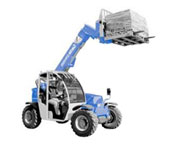
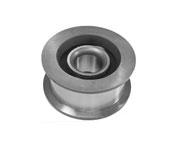
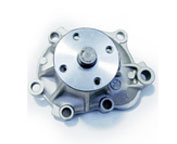
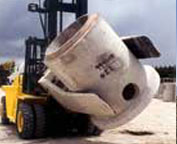
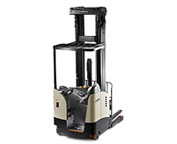
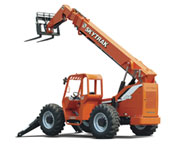
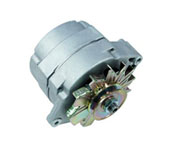
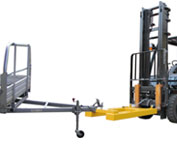
Lift Parts Express
TOLL FREE: 1-888-695-7994
forkliftpartsmichigan.com
Email Us
About Us


